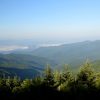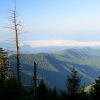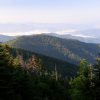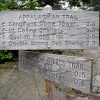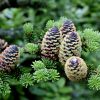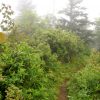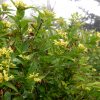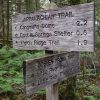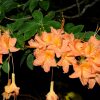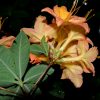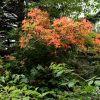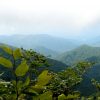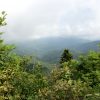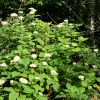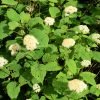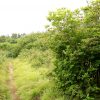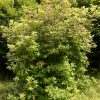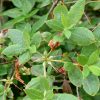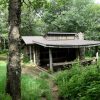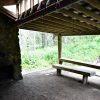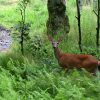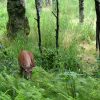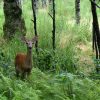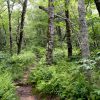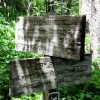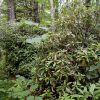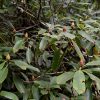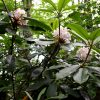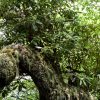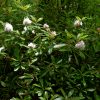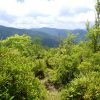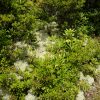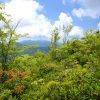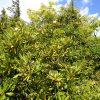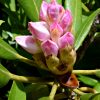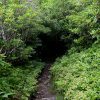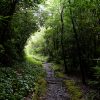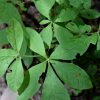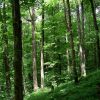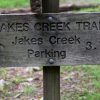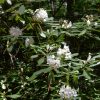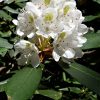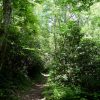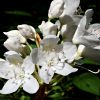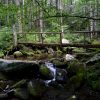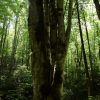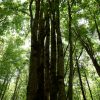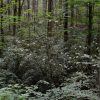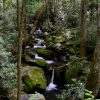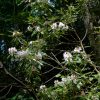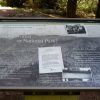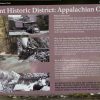Clingmans Dome – Silers Bald – Cold Spring Knob – Miry Ridge – Dripping Spring Mountain – Jakes Gap – Elkmont (28km/17.4M, 490m/1610ft elevation gain, 1710m/5610ft elevation loss)
The intention of this hike was to find out, if there is R. smokianum growing on Dripping Spring Mountain. The suspicion was obvious since the mountain had some anakeesta rock and in satellite pictures a treeless area could be seen right there.
Fog was rolling in when I reached the viewing platform on Clingmans Dome. The tower up there with its long concrete ramp is a true monstrosity. Early in the morning everything was still calm here. But soon this highest peak of the Smokies would turn into a tourist hotspot as it is doing every day. So I did not stay for long and started my hike westbound on the Appalachian Trail, running here all the time on the North Carolina – Tennessee border. Near Silers Bald I still found a few R. calendulaceum in flower, but most were clearly past bloom. At Cold Spring Knob I left the AT and turned to Miry Ridge. From this point on until Elkmont the forest floor was full of R. maximum. Up here they were not in bloom, yet, but at lower altitudes I was accompanied by thousands of white and pink flower trusses. Special interest rose two epiphytically growing specimens. They were living on a very old tree with huge stem and branches. I had never thought to find R. maximum in such a place. On Dripping Spring Mountain there were many blueberries, R. catawbiense and Kalmia latifolia. Even R. maximum was growing in full sun. Since it does not like too much light its leaves were yellow and along their margins curled. Unfortunately I did not find R. smokianum here. Parts of the summit were in fact treeless and full of ericaceous plants. However, since the mountain top was very much rounded and not steep at all there had not been landslides for ages here. So there had also not been any open rocky spaces for R. smokianum to germinate and grow. Shortly before reaching Jakes Gap I encountered an azalea without flowers, maybe R. calendulaceum or R. cumberlandense.
Despite not finding R. smokianum this hike, leading me into the depths of the national park, was a wonderful experience of nature and solitude to me. It was a wonderful, rich day with lots of time for reflection. I just met two people in the morning on the Appalachian Trail and was alone for the rest of the day. The high ridges, deep valleys and old trees provided an even more intense experience, because I hiked alone. The only company I had was a curious white tailed deer following me for a few moments and posing for pictures. Close to Elkmont the traffic on the trail increased a little again.


